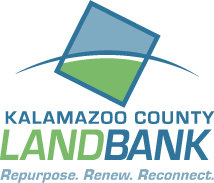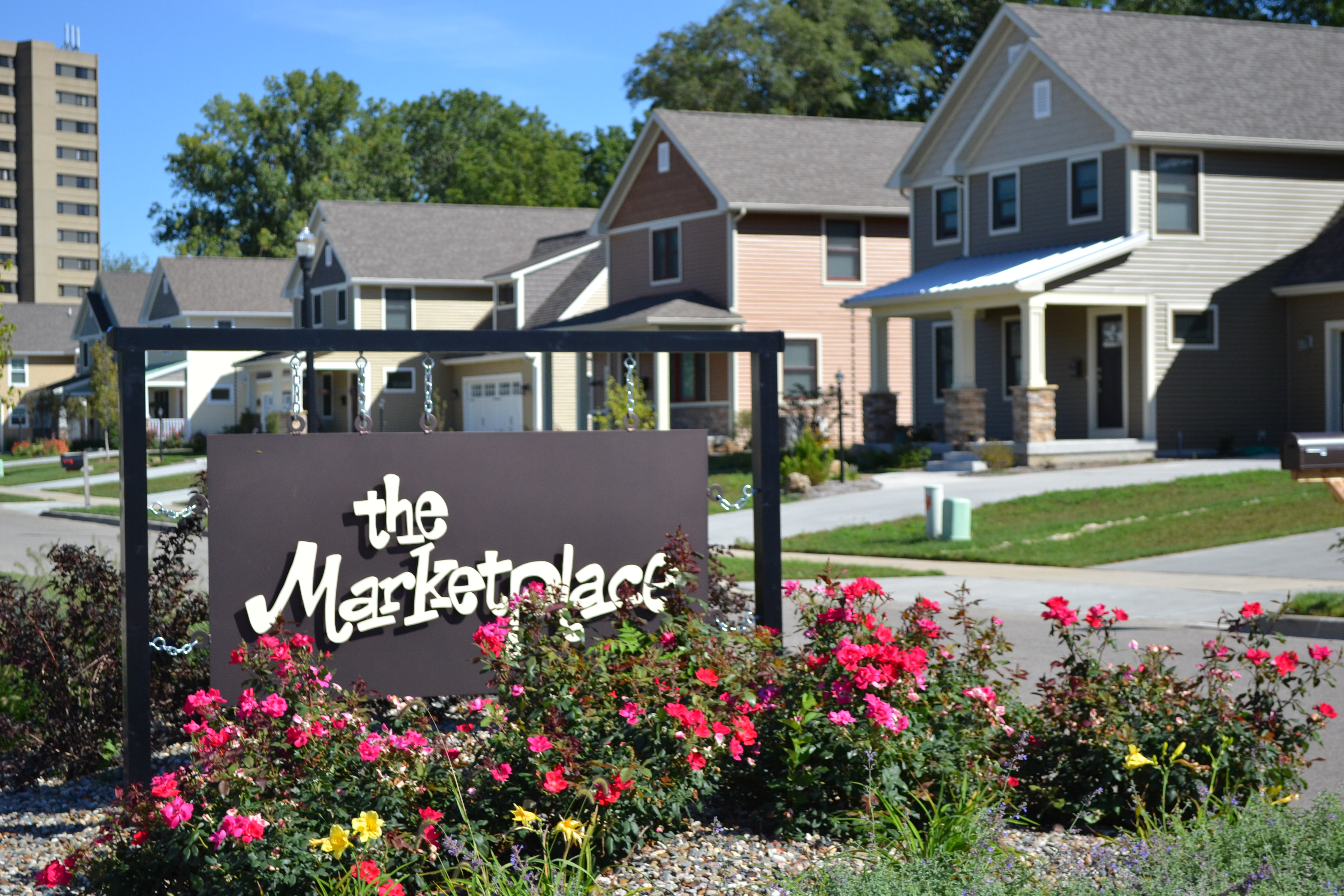The Marketplace
The Marketplace development began as parcels of vacant land on 7 acres located in the Edison neighborhood across the street from the Kalamazoo Farmers Market. The Edison neighborhood was one of the City’s hardest hit areas in terms of blight, vacancies, crime and lack of redevelopment. But the market was a thriving and stable source of pride for the area, and draws hundreds of people every year to explore a corner of the Edison neighborhood, near downtown Kalamazoo. There is also a nearby City park and pool, and the site is close to Bronson Hospital. The privately-owned land across the street from the market had been vacant for many years with no private market interest in taking on a larger-scale development. This opportunity came along in the form of the Neighborhood Stabilization Program (NSP). In the wake of the housing crisis, the NSP program was established to help support and stabilize communities suffering from foreclosure and abandonment.
In 2009, the City of Kalamazoo was awarded NSP funds from the Department of Housing and Urban Development via the Michigan State Housing Development Authority (MSHDA). The City entered into an agreement with the Kalamazoo County Land Bank Authority for the acquisition and management of the vacant land in 2010. In 2011, the City of Kalamazoo finalized a partnership with the Home Builders Association of Greater Kalamazoo and the Kalamazoo County Land Bank Authority to complete a $5 million housing project on this site, across from the Kalamazoo Farmers Market.
The result of this agreement was the construction and sale of 23 quality, craftsman style homes that were sold to low- to moderate-income families. A group of local home builders known for quality craftsmanship worked together to create an attractive neighborhood of homes that are unique, but fit well together and create a beautiful streetscape. The construction of these homes was completed by 91 contractors and sub-contractors with over 140 employees. In addition, five workers gained experience through the Project Hope training program which provides ex-offenders an opportunity to gain employable skills in the building trades. Ten minority- and women-owned businesses were among those hired as part of this project. At a time when housing construction was at a standstill, this project helped local contractors and their employees gain work.
Most homes were 1,600-1,900 square feet, and included appliances, bonus rooms, energy efficient upgrades, and attractive finishes meant to make these homes stand out as a model for future redevelopment in the area. The homes were sold to individuals and families from all walks of life, including several first-time homebuyers who were able to afford the housing through the subsidies provided on a sliding scale depending on their income level.
A ribbon-cutting ceremony was held in 2012 celebrating the completion of this project, and marking a major step forward for the Edison neighborhood.

